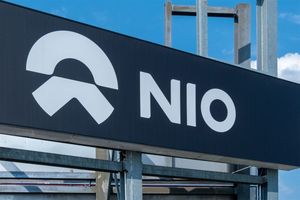
In a dramatic turn for the digital asset landscape, the U.S. Securities and Exchange Commission (SEC) has undergone a significant policy shift, transforming the outlook for Solana (SOL) spot Exchange-Traded Funds (ETFs) from near certainty of rejection to a highly probable future approval. This evolution marks a pivotal moment for Solana and the broader cryptocurrency market, signaling a new era of regulatory accommodation for altcoins beyond Bitcoin (BTC) and Ethereum (ETH).
For months, the crypto community watched with bated breath as applications for Solana spot ETFs languished, with earlier reports indicating that the SEC was preparing to issue rejection notices to at least two of the five asset managers vying for approval. This cautious stance was consistent with the agency's historical reluctance under its previous administration to greenlight crypto ETFs, citing concerns over market manipulation and investor protection. However, a recent and decisive change in regulatory posture has not only rekindled hopes but has set the stage for a potential wave of new digital asset investment products.
The Pivotal Shift: From Caution to Comprehensive Approval Framework
The narrative around Solana spot ETFs has seen a remarkable reversal, primarily driven by a fundamental change in the SEC's approach to digital asset regulation. Historically, the SEC maintained a highly restrictive stance on crypto ETFs, approving only Bitcoin and, more recently, Ethereum spot products after protracted legal battles and extensive reviews. This cautiousness stemmed from deep-seated concerns regarding regulatory uncertainties, market integrity, and investor safeguarding, particularly for Proof-of-Stake (PoS) cryptocurrencies like Solana, whose staking mechanics presented additional complexities.
Prior to September 2025, specific details painted a bleak picture for Solana. Fox Business journalist Eleanor Terrett had reported that several asset managers were informed of likely rejections, echoing the SEC's historical aversion. The classification of SOL as a potential security in past lawsuits against major exchanges further complicated its path to a regulated ETF. Indeed, earlier Solana ETF proposals were formally rejected in August 2024, explicitly citing these concerns.
However, the appointment of Paul Atkins as the new SEC Chair and the subsequent introduction of updated regulatory frameworks in September 2025 have fundamentally reshaped the landscape. The SEC approved new "generic listing standards" for cryptocurrency-based ETFs, effectively streamlining and accelerating the approval process for a broader range of digital assets. This groundbreaking move replaces the arduous case-by-case review system, potentially reducing the listing timeline from up to 240 days to a mere 60-75 days. A key milestone in this new era was the approval of Grayscale's Digital Large Cap Fund (OTCQX: GDLC), the first U.S. multi-crypto Exchange Traded Product (ETP), which notably includes Bitcoin (BTC), Ethereum (ETH), XRP (XRP), Solana (SOL), and Cardano (ADA). This inclusion is widely interpreted as a definitive signal that the SEC is now open to allowing ETFs linked to a more diverse array of digital assets.
Solana's Ascendance: Winners Emerge in a Reimagined Market
The SEC's dramatic policy shift has clearly delineated a new set of winners in the burgeoning digital asset market, with Solana (SOL) and its ecosystem poised for significant gains. At the forefront are Solana (SOL) holders and the developers building on its high-throughput blockchain. Validation through a spot ETF is expected to mirror the price surges and increased adoption experienced by Bitcoin and Ethereum post-ETF approval, solidifying Solana's position as a premier Layer 1 blockchain. The influx of institutional capital, previously hesitant due to regulatory ambiguity, is now likely to view Solana as a legitimate, institutional-grade asset, driving further price appreciation and network development.
Asset managers who have diligently pursued Solana spot ETF applications, such as those that filed with Cboe BZX (CBOE), now stand to benefit immensely. While earlier applications faced rejection, the new generic listing standards mean their efforts could soon come to fruition, allowing them to capture a significant share of the burgeoning demand for regulated Solana exposure. Companies like Grayscale Investments (OTCQX: GBTC), having already secured approval for their multi-crypto GDLC fund which includes Solana, have demonstrated a strategic advantage, pioneering diversified crypto investment products and setting a precedent for broader market acceptance.
The broader cryptocurrency market also emerges as a significant winner. The regulatory clarity and expanded access provided by these new ETF standards are anticipated to usher in a new wave of institutional and retail investment. This increased capital inflow is likely to bolster overall market liquidity, reduce volatility, and enhance the legitimacy of the entire digital asset space. While no clear "losers" are immediately apparent from this positive development, it could intensify competition among Layer 1 blockchains. However, the overall sentiment is that the rising tide of institutional adoption will lift many boats, fostering an environment of innovation and growth across the crypto industry.
Industry Ripple Effects and Regulatory Evolution
The SEC's pivot to generic listing standards and the implied green light for Solana spot ETFs represent a profound shift with far-reaching implications for the entire digital asset industry. This event does not merely validate Solana; it redefines the regulatory landscape for all cryptocurrencies, suggesting a future where a diverse array of altcoins could find their way into regulated investment vehicles.
This new framework signals a departure from the previous "monolithic asset class" view of crypto, where only Bitcoin and Ethereum were deemed mature enough for traditional finance products. Now, the industry is moving towards a more nuanced understanding, allowing for strategic asset allocation across a broader spectrum of digital assets. Experts predict that this regulatory clarity could trigger the launch of over 100 new crypto ETFs within the next year, dramatically expanding investor access and mainstream adoption. This move positions the U.S. market to catch up with, and potentially surpass, other jurisdictions that have already embraced a wider range of crypto ETPs.
The ripple effects extend to regulatory and policy implications, solidifying the SEC's evolving role from gatekeeper to facilitator, albeit under strict guidelines. This proactive approach by the new SEC administration under Paul Atkins sets a powerful precedent, suggesting a more pragmatic and efficient pathway for future digital asset product approvals. Historically, the journey for Bitcoin and Ethereum ETFs was fraught with delays and rejections, often requiring legal challenges to push approvals forward. In contrast, this new framework bypasses much of that protracted struggle, pointing towards a more collaborative and predictable regulatory environment. This historical comparison highlights the magnitude of the current shift, indicating a maturation of both the crypto market and the regulatory bodies overseeing it. The market is now witnessing a convergence of traditional finance with innovative digital assets, driven by clearer rules and faster approval processes.
The Road Ahead: Anticipating a New Era of Digital Asset Investment
With the SEC's recent policy shift and the approval of generic listing standards, the path forward for Solana spot ETFs appears remarkably clear and optimistic. In the short term, the market can expect rapid progress on existing Solana ETF applications. Prediction markets are already assigning a high probability, approaching 95%, to the eventual approval of U.S. spot Solana ETF applications. Given the newly streamlined process, formal approvals could occur much faster than previous crypto ETF rollouts, potentially within weeks or a few months, rather than years. This will likely trigger immediate price movements for SOL as institutional interest translates into significant capital inflows.
In the long term, the implications are even more profound. The approval of Solana spot ETFs will undoubtedly solidify Solana's position in traditional finance, validating its technological prowess and robust ecosystem. This institutional embrace will likely attract a new echelon of investors, further deepening liquidity and market stability for SOL. Beyond Solana, this precedent will pave the way for numerous other altcoins to pursue their own spot ETF listings, leading to a much more diversified and accessible crypto investment landscape. This shift will necessitate strategic pivots from existing crypto firms and traditional financial institutions, as they adapt to a market that increasingly blends traditional investment vehicles with novel digital assets.
Potential strategic adaptations include increased product development focusing on various altcoin ETFs, enhanced custody solutions, and advanced risk management frameworks tailored for digital assets. Conversely, challenges might include managing increased market volatility around ETF launches and ensuring robust compliance within a rapidly evolving regulatory environment. Scenarios range from a steady integration of digital assets into mainstream portfolios to a rapid acceleration of crypto adoption driven by accessible, regulated products. Investors should watch for official approval announcements, the subsequent launch dates, and the immediate market reactions, as these will be critical indicators of the impact of this new regulatory paradigm.
Conclusion: A Transformative Moment for Solana and the Crypto Market
The journey of Solana spot ETF prospects has been a microcosm of the broader cryptocurrency market's battle for mainstream acceptance and regulatory clarity. What began with signals of likely rejection, reflecting the SEC's historically cautious approach to novel digital assets beyond Bitcoin and Ethereum, has culminated in a transformative policy shift. The introduction of generic listing standards and the explicit inclusion of Solana in multi-asset investment vehicles like Grayscale's Digital Large Cap Fund (OTCQX: GDLC) signify not just a green light for SOL, but a broader maturation of the entire digital asset ecosystem.
This pivotal moment underscores the SEC's evolution under new leadership, moving from a position of rigid gatekeeping to one of structured facilitation. The implications are far-reaching: increased institutional capital, accelerated innovation in financial products, and an unprecedented level of accessibility for retail and institutional investors alike. Solana (SOL) stands to gain significantly from this development, potentially witnessing substantial price appreciation and further entrenchment as a leading Layer 1 blockchain.
Moving forward, investors should keenly observe the final approval processes for specific Solana spot ETF applications and the market's initial reactions to their launch. The success of these products will not only dictate Solana's trajectory but will also serve as a blueprint for other altcoins seeking similar institutional validation. This era marks a definitive turning point, where the question is no longer "if" but "when" for the full integration of diverse digital assets into the global financial framework, promising a more inclusive, dynamic, and regulated market for years to come.





